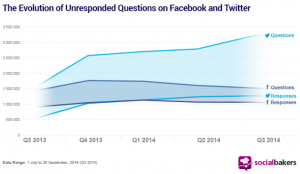Economic downturns are inevitable, and every business should be built with enough resiliency to withstand them. Let’s discuss how to make sure you have the right foundation in place to work through and recover from every possible economic cycle.
Are economic downturns really inevitable?
History would say, yes. Downturns are inevitable due to a variety of reasons. The most common is that they are a countermeasure to the natural business cycle’s boom periods. Nothing lasts forever, as they say, not the least of which is economic prosperity. In fact, history shows that approximately every 10 years, the American economy experiences a recession. Underlying causes include:
- Financial crises. Major shocks such as the 2008 housing bubble and 1929 stock market crash are well-known examples of failing financial institutions causing widespread economic havoc.
- Supply-side shock. This is typically caused by important commodity prices skyrocketing, as was the case for the oil crisis of the 1970s.
- Black swan events. Unpredictable events such as the COVID-19 pandemic can grind world economies to a halt. The International Monetary Fund estimates that the lost global economic output from the coronavirus could reach $ 9 trillion or more.
So, how can my organization plan for downturns?
While being optimistic is great, it’s obvious that organizations need to plan for economic downturns. If they don’t, they risk a slow or impossible recovery after one does occur.
After all, some companies actually perform well during recessions. For instance, industries well-suited towards COVID-19 lockdowns and remote work – such as Amazon – have seen their stocks soar since the pandemic started. However, with a well thought out plan, businesses that aren’t directly helped by the changing market conditions during a downturn can still succeed. Take a look at some suggestions to help your organization weather the next storm.
How can we foster a resilient culture?
A great corporate culture builds team spirit within departments. Employees feel more connected and engaged with their work and are ready to do what’s necessary for the company to succeed. Part of building the best culture possible is promoting a resilient mind frame to your employees. Studies show that resilient workers – defined as those who can remain mentally sound during periods of severe distress – can handle difficult work environments better. This makes building a resilient culture an important priority for any organization that wants to get through economic downturns. Ways to accomplish this include:
- Health programs. Resilient employees are healthy employees. In fact, there is a demonstrated link between physical and mental health. Institute exercise programs that can be taken throughout the week at work. Examples are yoga, calisthenics or even light stretching breaks.
- It is estimated that only2.5% of people can actually multitask efficiently. For the rest of the population, chronic multitasking leads to a host of bad outcomes, including reduced cognitive ability. Train employees to compartmentalize tasks as much as possible. Complete these tasks or at least come to a good stopping point before switching to another.
- Detachment breaks. Breaks are important to take throughout the day. If you encourage people to clear their minds about their work and truly detach for small amounts of time, productivity increases.
How do we prepare for financial crises?
Financial crises decrease aggregate demand and put major strains on balance sheets. It’s difficult to prepare for every possible scenario, but in general, try to:
- Minimize credit exposure. Many industries have consumers that rely on credit for purchases, such as the automotive and housing sectors. This is usually for large scale purchases, but the practice has trickled down into consumer goods as well. If your organization internally finances lower-cost goods to consumers, consider making that a less important part of revenue. During a crisis, defaults skyrocket, and it could leave your balance sheet devastated.
- Reduce working capital. Many companies aren’t as efficient as they could be in regards to working capital. Through smart reductions in inventories and receivables, it is estimated that most manufacturing businesses could save cash at a level of up to 10% of their sales.
How do we prepare for supply-side shocks?
Since the global economy is so interconnected today, supply-side shocks affect everyone. The best way to prepare for them is to diversify wherever possible. Maintain relationships with suppliers throughout the world, so that geographic-related disturbances (earthquakes, social unrest, etc.) don’t freeze your supply chain completely. It’s also a good idea to keep a tight network of domestic suppliers to plan for border restrictions.
How do we prepare for black swan events?
Unforeseen disasters, such as the current COVID-19 pandemic, are the most difficult to prepare for since the details cannot be predicted. There are still some things you can do, however, such as:
- Make a business continuity plan. A continuity plan goes over important business operations and how to maintain them during an emergency. This takes into account many variables and requires extensive research about your core business.
- Develop contingencies for when in-office work isn’t possible. A black swan event can displace a large portion of the workplace. Ensure your organization is up to the task. Have technology solutions ready for newly remote workers so that employees remain productive and communicative.
- Have a communications plan. You should have a great communications plan in effect already, but black swan events require an even more extensive strategy. Uncertainty is a major cause of stress during these times, and leadership should communicate honestly and more often as a result.
As you may have noticed, certain events can fall into more than one category. COVID-19 counts as both a black swan event and a supply-side shock. Supply chains throughout the world have been disrupted and business slowed as companies reduce their output capacity. Regardless, if you follow the advice above, your organization can get through difficult times and be poised to recover quickly afterward.
Business & Finance Articles on Business 2 Community
(62)






